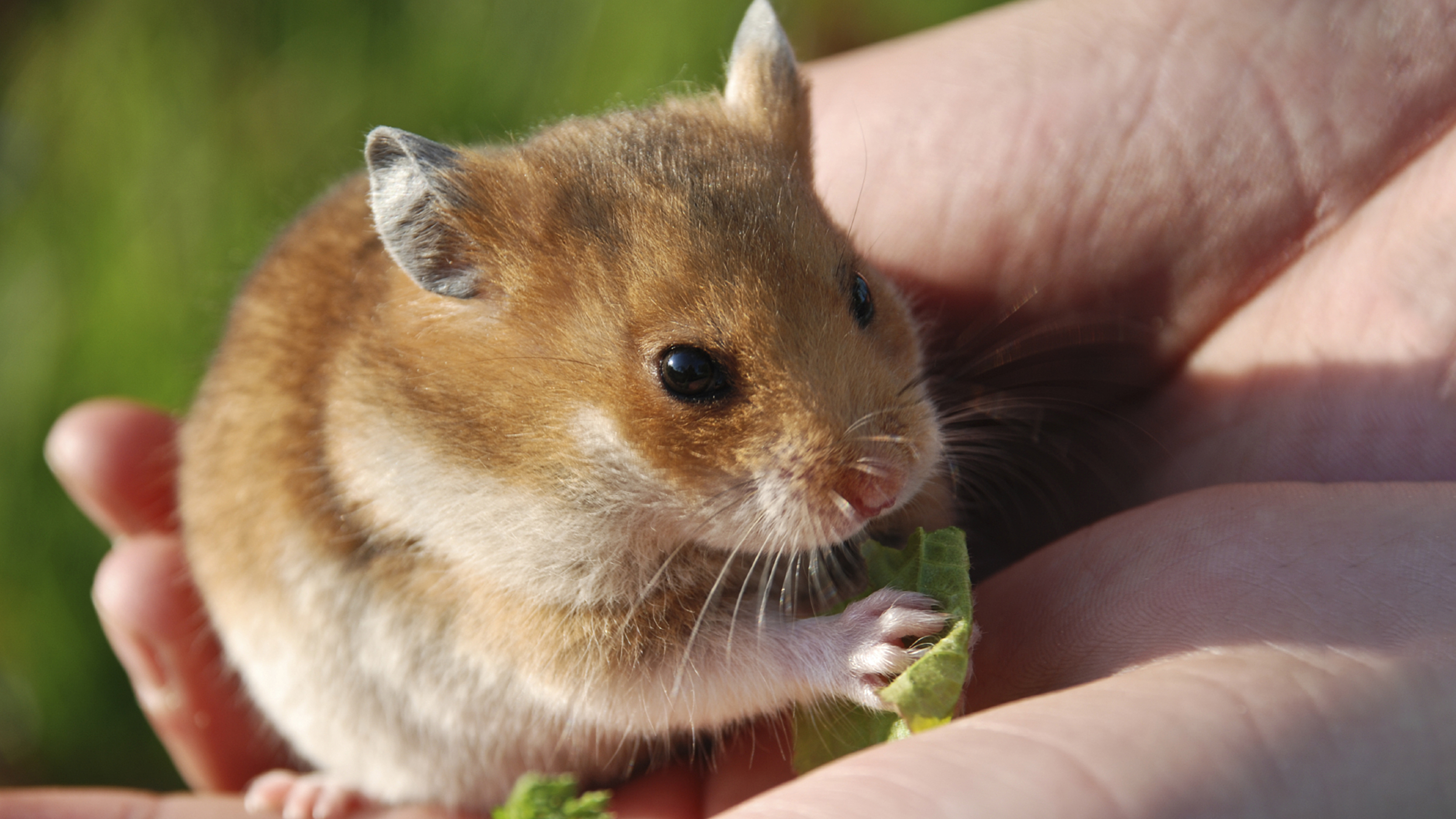
Handling Small Pets
Top tips for handling your small furry!
While our smallest pets may seem remarkably robust as they rocket around their cages or enclosures, it’s important to remember they still need to be handled with care and confidence.
More about handling small pets
Hamsters sleep during the day, so think about when you want to handle your hamster. Mornings and evenings are best, as your hamster might not appreciate being awoken for a mid-sleep play session!
Tame your hamster slowly. Start by placing your hand into their cage and gently cupping them, letting them run off your hands if they want to. Slowly build their confidence sitting on your hand, and only then start to gently lift them.
By associating handling time with a cue, such as calling their name and tapping on the cage, you should soon see your hamster start to come to you for attention.
If they don’t, as long as you know they are well, leave them be. Taking them out of their bed or handling them when they don’t want to handled is a quick recipe for getting bitten!
Rats are very sociable animals and tame rats will love nothing more than spending time out of their cage with their owner.
Rats may come to you tame if they have been well handled from birth, or may require a slow build of trust if they have only had limited human relationships before.
When picking up a rat grasp them around the shoulders, just behind the front legs, and use your other hand to support their bottom. Hold them close to your body, so they feel safe and secure.
Be aware that rats can move quickly! Handle them in a safe area, and make sure they can’t injure themselves falling from height.
Finally never hold a rat by the tail. This can cause serious injury, as well as being painful.
Gerbils are curious creatures but not the easiest to handle, especially as they can move very quickly. This can make them difficult for younger children to hold without using excessive pressure.
Starting taming your gerbils as early as possible will help with success. At first, just sitting by the cage and offering treats will help your gerbils acclimatise to your presence.
Slowly start putting your hand in the cage for the gerbils to explore, then move to gently cupping the gerbils and gently lifting them slightly. Allow them to run off if they like.
When moving to taking your gerbils out of the cage holding them around the shoulders with one hand and supporting their bottom with the other is a secure and safe way to restrain them.
Never hold a gerbil by the tail. This can cause serious injury, as well as being painful.
Chinchillas can enjoy spending time with their owners but are naturally timid and need careful handling.
As prey in the wild chinchillas have developed a novel reaction to stressful handling called ‘fur slip’, where a large quantity of fur sheds in one go. This can look quite distressing.
To avoid fur slip and keep your interactions with your chinchillas calm it’s important to build up trust slowly before you pick them up.
When you do advance to picking up your chinchillas, make sure they always feel safe and supported. You can do this by using one hand under or around their chest, and the other supporting their bottom. Hold them close to your body and upright, and with light pressure.
Children can struggle to handle chinchillas, so setting up a safe floor area can be a great way for children to interact with chinchillas without fear of hurting or stressing them.
Degus are agile and fast so require careful handling.
The key to successfully handling your degu is to take it slow and build up trust.
Start by offering your degu an open palm and reward positive interactions with treats. Slowly build up the amount of physical contact until your degu allows you to pick them up.
Pick them up around the shoulders and always support their back end with your other hand. You can also carry them in cupped hands, but they must be secure as a fall from height could cause serious injury.
Never hold a degu by the tail as the tail can slough off as a defence mechanism. This is very painful and a sloughed tail will never grow back.
Guinea-pigs may seem sturdy but their thin bones are actually quite delicate so it’s important to handle them carefully and confidently.
As a prey species your Guinea-pig may be nervous of you at first so build up trust by approaching slowly, at ground level, and offering treats.
Coming down at them from above or approaching from behind can both be intimidating for your Guinea-pig and may evoke a fear response.
When your Guinea-pig is confident around your hand and is allowing themselves to be stroked you can try and pick them up. Use one hand under or around their chest, and the other to support their bottom.
Hold them into you rather than away from the body so they feel secure.
Slowly build up the time you spend holding your Guinea-pig as they become more used to the sensation.
When putting them down don’t let them jump, rather place them carefully on the floor to avoid broken bones.
